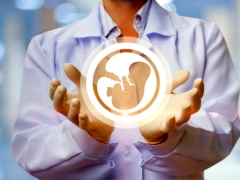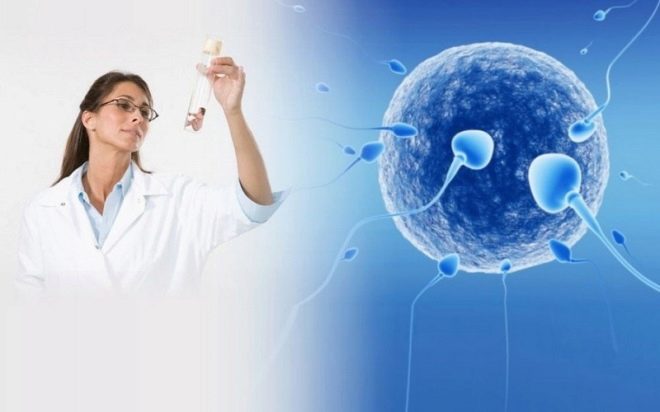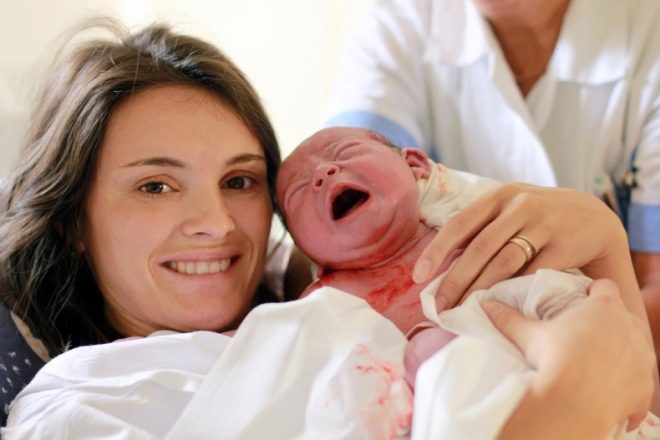The history of IVF and the first procedure in Russia
Estracorporeal fertilization, which was a real breakthrough in medicine, appeared about 40 years ago. For four decades, the method has improved significantly and has become more accessible to the masses. In this article we will describe the history of IVF in the world and in Russia.
How it all began?
Before people realized that infertility can and should be fought by any means available, there were not so many alternatives for infertile couples - either to accept and live “for themselves”, or adopt an orphan and put all his soul into it. Women and men could not fight against certain forms of infertility, and if the treatment did not help, then religion, society, and doctors suggested that the couple accept this as inevitable.
The method of extracting the egg from the female body and its subsequent fertilization outside the mother's body, and then replanting the fertilized eggs into the uterus, from which the embryo had already begun to develop, was considered something of science fiction in the middle of the 20th century. And today there are already about 5 million people living on the planet, who were conceived "in vitro", and this number is growing rapidly every year.
The first to think about the possibility of helping infertile couples was the American researcher Hamilton, who in 1944 began to study the possibilities of extracting eggs and their fertilization. But he failed to achieve significant results. But the theoretical basis of the doctor has created an excellent. In the same year, in another American clinic, inspired by Hamilton’s experiments, colleagues conducted about 800 experiments and received only three eggs, which were able to break up outside the maternal organism to the state of two blastomeres.
In 1951, Dr. Chang (USA) came to the conclusion that the failures of his colleagues were due to a lack of understanding in which environment the egg cell should be located and fertilized. And he begins to develop nutrient media. A significant breakthrough in reproduction occurred in 1954, when the Soviet scientist G. Petrov described all the stages of the fragmentation of a fertilized oocyte. Now scientists all over the world knew in which direction to move on.
In 1966, the British physiologist Robert Edwards came to a sensational conclusion: the eggs in a woman’s body mature within 36 hours after the peak of the lutenizing hormone. For this he was awarded the Nobel Prize in 2010.
In Australia, in 1973, the baton was intercepted, and Carl Wood was able to carry out the first replanting of a fertilized egg to a woman. The success was deafening, however, after a while the embryo rejected, the pregnancy was interrupted.
The first significant success was achieved by a group from the UK. In 1977, they successfully fertilized the egg, transported the embryo into the woman's uterus. The first test-tube girl, Louise Brown, was born in 1978. The first child, born thanks to IVF, is now 40 years old. Louise has her own children, whom she, by the way, conceived in a completely natural way.
The Australians, who were only one step away from a victory over infertility, continued their research, and in 1983 received the first baby, which was obtained from a cryopreserved (frozen) embryo. In the same year, by their efforts, the first baby was born, which was born as a result of IVF with a donor embryo, and three years later the same scientists were able to take the seed of a man with a severe form of infertility surgically, fertilize their egg, make a transfer. A healthy and strong baby was born.
The first successful IVF in the USSR was conducted in 1985. The procedure of artificial insemination was carried out by the doctors of the Center for Maternal and Child Health (Moscow). In February 1986, a girl was born.In the same year, a boy was born in Leningrad, also obtained as a result of successful IVF. The professional views of all the doctors of a large country were riveted on these children, since there was absolutely no information about how children grow and develop, conceived against the will of nature in the laboratory.
The first IVF in Russia in the post-Soviet time was carried out by the capital doctors. And almost immediately, clinics that provided in-vitro fertilization services began to appear throughout the country. First, in its major cities, then in smaller ones.
In 2010, in Russia, at the government level, it was decided to make the procedure more accessible to the masses. The question was raised by the president as part of the solution of pressing issues of demography. At first, about one and a half billion rubles were allocated from the state treasury so that 10,000 childless couples in Russia could try to become parents at the expense of the state through IVF.
Since 2014, IVF has been included in the compulsory health insurance program and the procedure for couples who have direct indications for assisted reproductive technologies can be covered by the MHI policy if certain conditions are met, among which there is a policy, Russian citizenship, not older than 39 years.
How did IVF change?
At first, all experiments and experiments were carried out on the biological material of animals. When they began to experiment with human sex cells, it caused a storm of public indignation. Representatives of various religions (especially Orthodoxy and Catholicism) literally rebelled against such interference in the sacrament of the birth of human life. Rumors began to appear that children conceived in this way have no soul, they are different from ordinary children, they have deformities and anomalies, they themselves are completely fruitless.
Time has put a lot into place. In most religions (with the exception of Catholicism), IVF is now permitted under certain conditions. - do not use donor spermatozoa and oocytes, do not use donor embryos, do not destroy “extra” embryos after selection of zygotes, and also do not apply to surrogate motherhood. Some religions and cultures (Buddhism, Judaism) have permitted this. In any case, the attitude of the church has softened, because now, according to statistics, about 1.2% of all newborns on Earth are “eco-friendly” children.
Time passed, the first "luxury" children grew up, they became teenagers, then adults. Their life clearly showed that many of the fears (infertility, developmental abnormalities) about the children from the test tube were not confirmed and remained myths and prejudices. Now the first children conceived by in vitro fertilization have grown their own children.
The development of children after IVF does not lag behind the age norms at all, according to psychologists, and in some places and far ahead of these norms, ECO-children are ill not more often than others.
The procedure itself for four decades has also undergone many changes. Initially, fertilization was performed under laboratory conditions using only fresh sperm and a freshly obtained oocyte, and the embryo was transplanted into the uterus in a natural cycle. Then, realizing that one or, in extreme cases, two received eggs, is too little to increase the chances of conception and the onset of pregnancy, the doctors began to use IVF in the stimulated protocol.
In the first half of the menstrual cycle, a woman receives hormonal treatment, which contributes to a more rapid maturation of a large number of follicles. On the right day, doctors receive not one, but several eggs, and after replanting the embryos, the woman continues to receive hormones, but already others that help create the most natural conditions in her body for successful implantation and gestation.
A little later, they began to apply cryopreservation of germ cells, sperm and embryos.Now, many couples that have passed through IVF have in their “stock” either frozen eggs in a cryobank or frozen embryos in case they want a second child. This allows you to delay the onset of pregnancy until the moment that the couple deems most appropriate. Delayed paternity and motherhood gives you chances of becoming pregnant at almost any age, up to 50 years and even older.
Now in Russia, reproductive assistive technology is carried out by several methods - in the natural cycle, with stimulation, using cryoembryos, cryo-oocytes and cryosperms, as well as with donor biomaterial and donor embryos. Surrogate motherhood is also developing, but it has not yet reached such momentum, as in the clinics of Israel.
Recently, information has spread in the society that IVF increases the likelihood of developing cancer in a woman, but there is no objective scientific evidence for this.
Interesting facts about IVF
Over the past 10 years, the number of IVFs in the world has doubled compared with the entire previous period of using the method and technology of in vitro fertilization.
The oldest patient who successfully gave birth to a child after IVF was 67 years old. Spaniard Carmen Bousada deceived the doctors and “underestimated” her age, saying that she was 55 years old. As a result, the woman was allowed to the procedure.
The most "persistent" was the patient of a clinic in Israel. A woman came to IVF 44 times! All attempts were unsuccessful, except for the last, the 44th, when she was able to get pregnant. Doctors are asked not to try to repeat her feat. Such "perseverance" can lead to the depletion of the functionality of the ovaries. The optimal number of stimulated protocols is 6-8.
Israel is considered the most “progressive” in relation to IVF. There, all expenses for IVF and the concomitant treatment of a sterile couple are borne by the state until the couple has at least two children.
How the IVF procedure is carried out, see the next video.




























